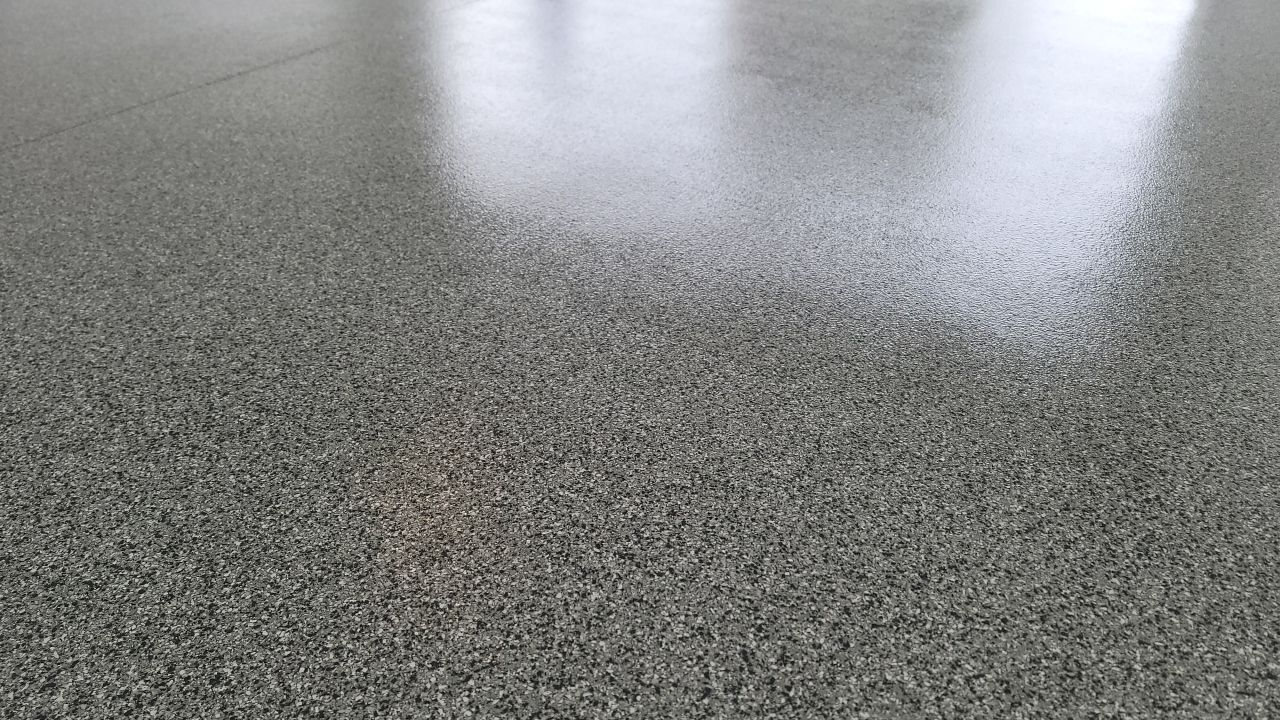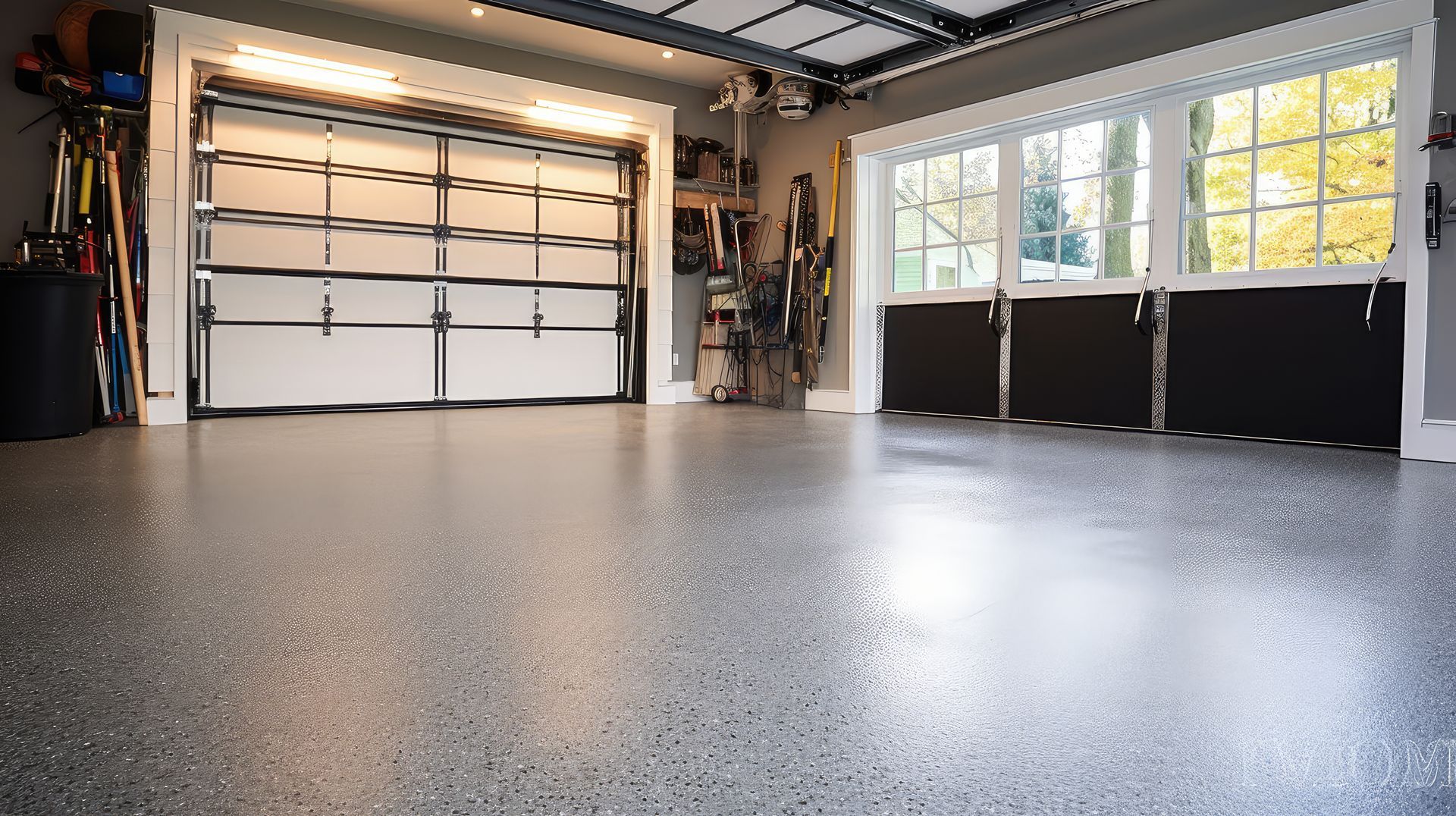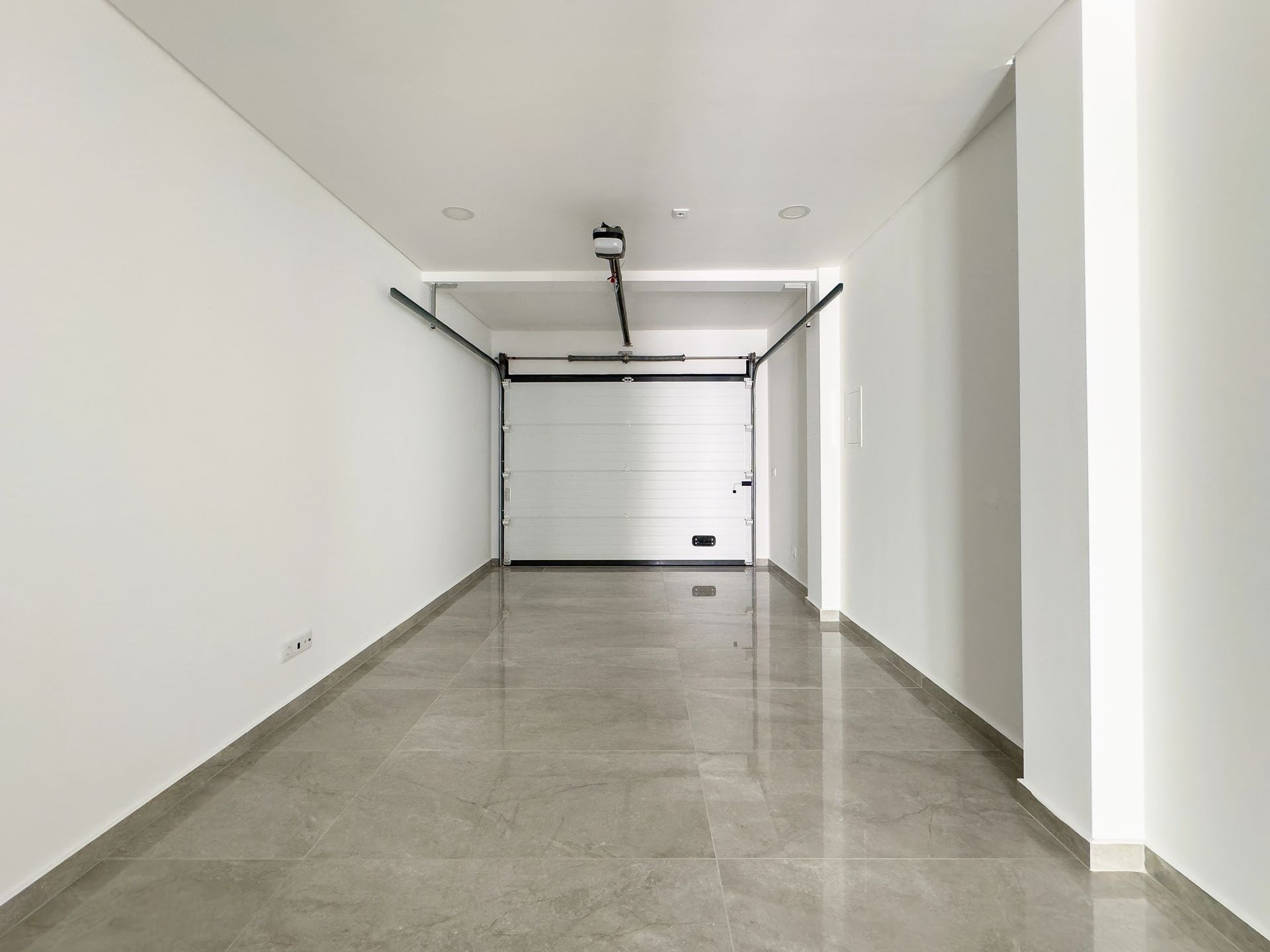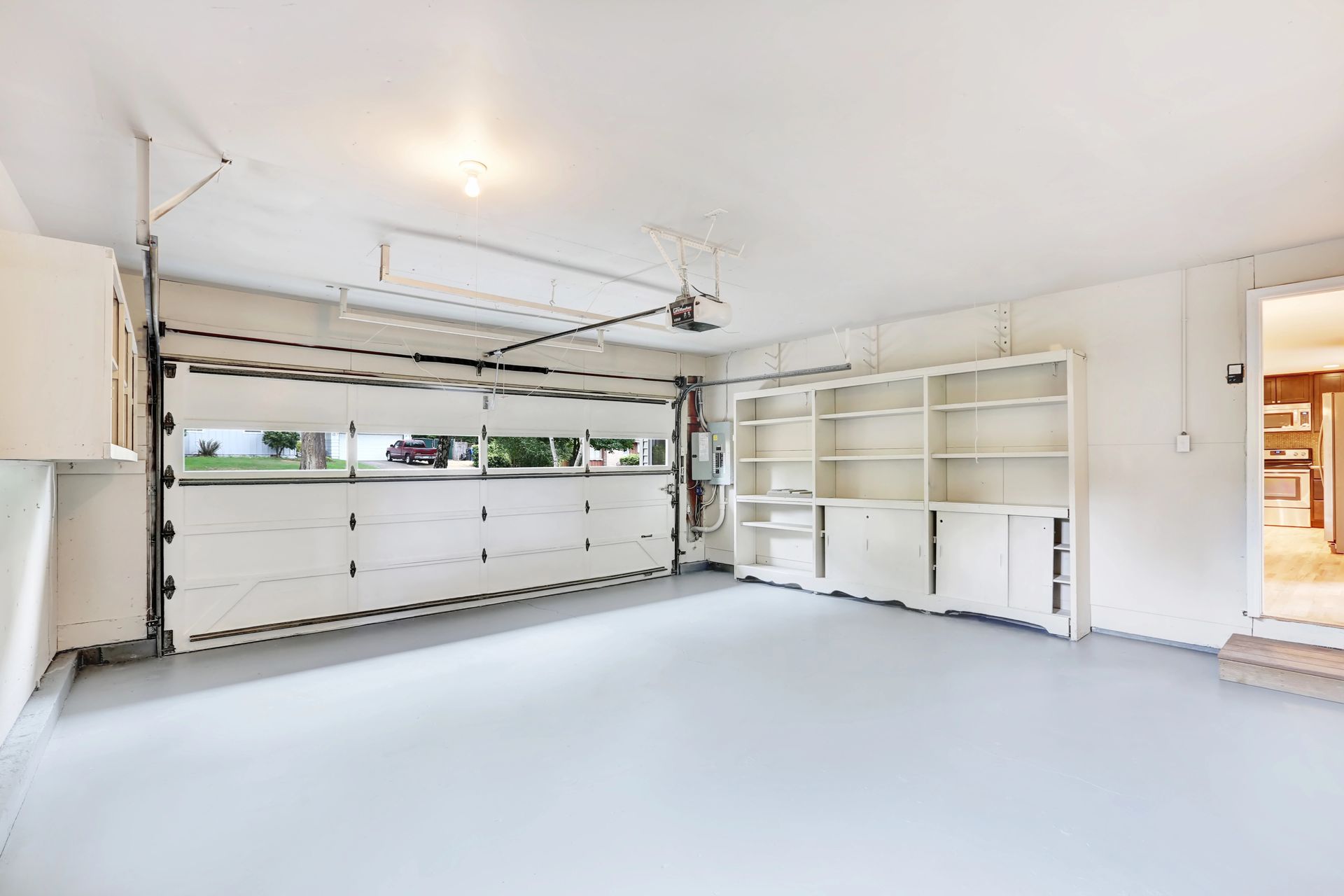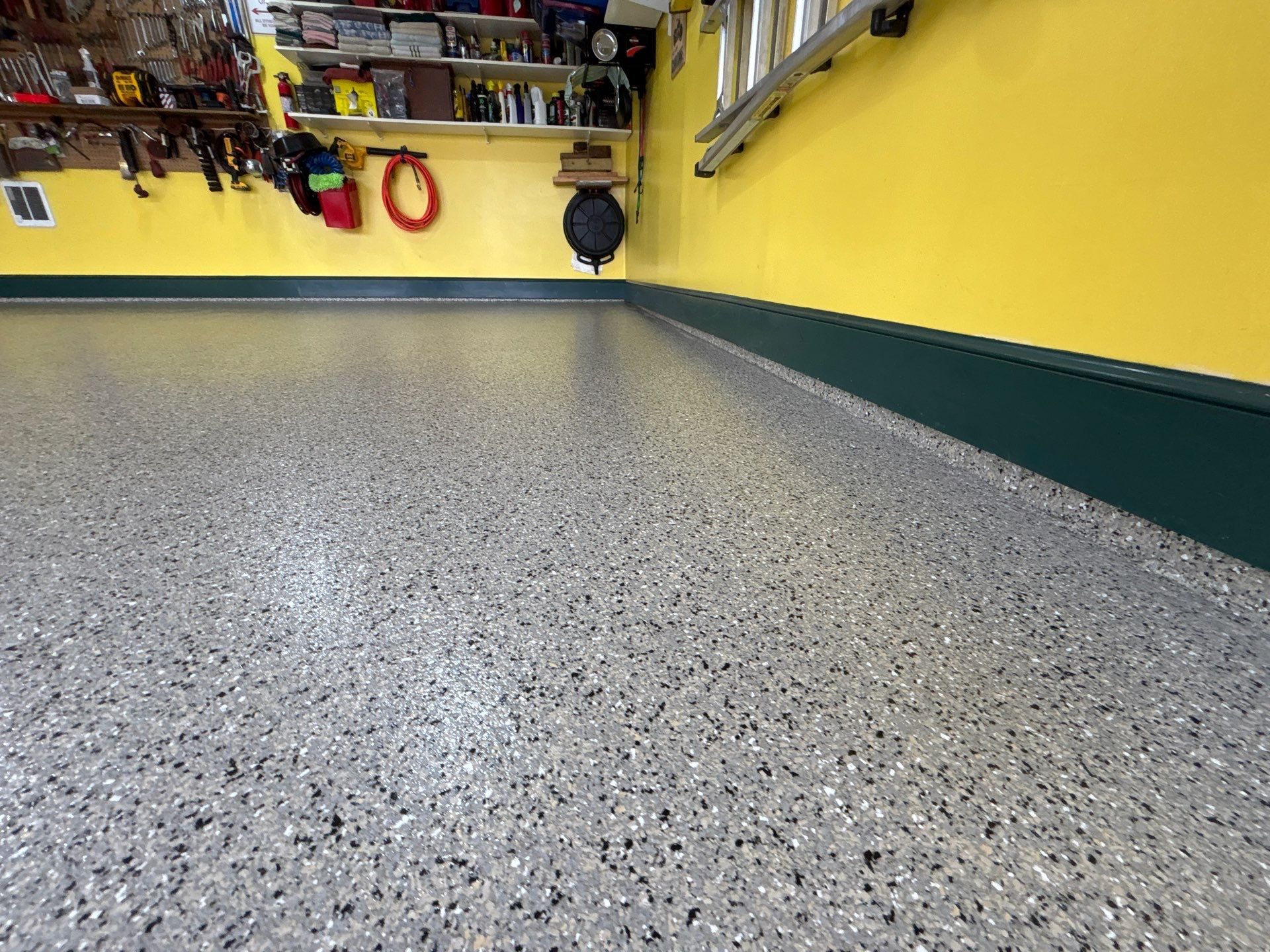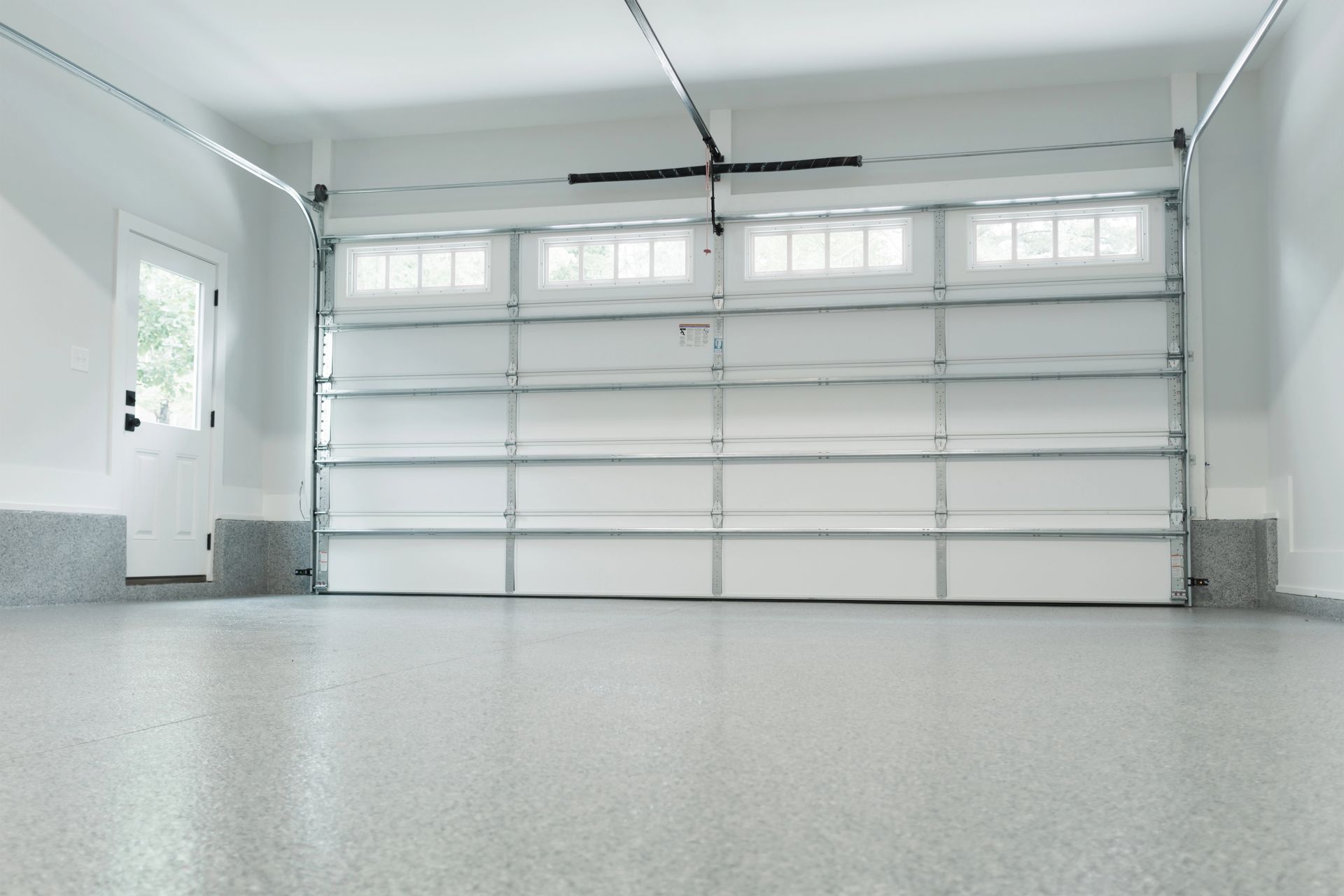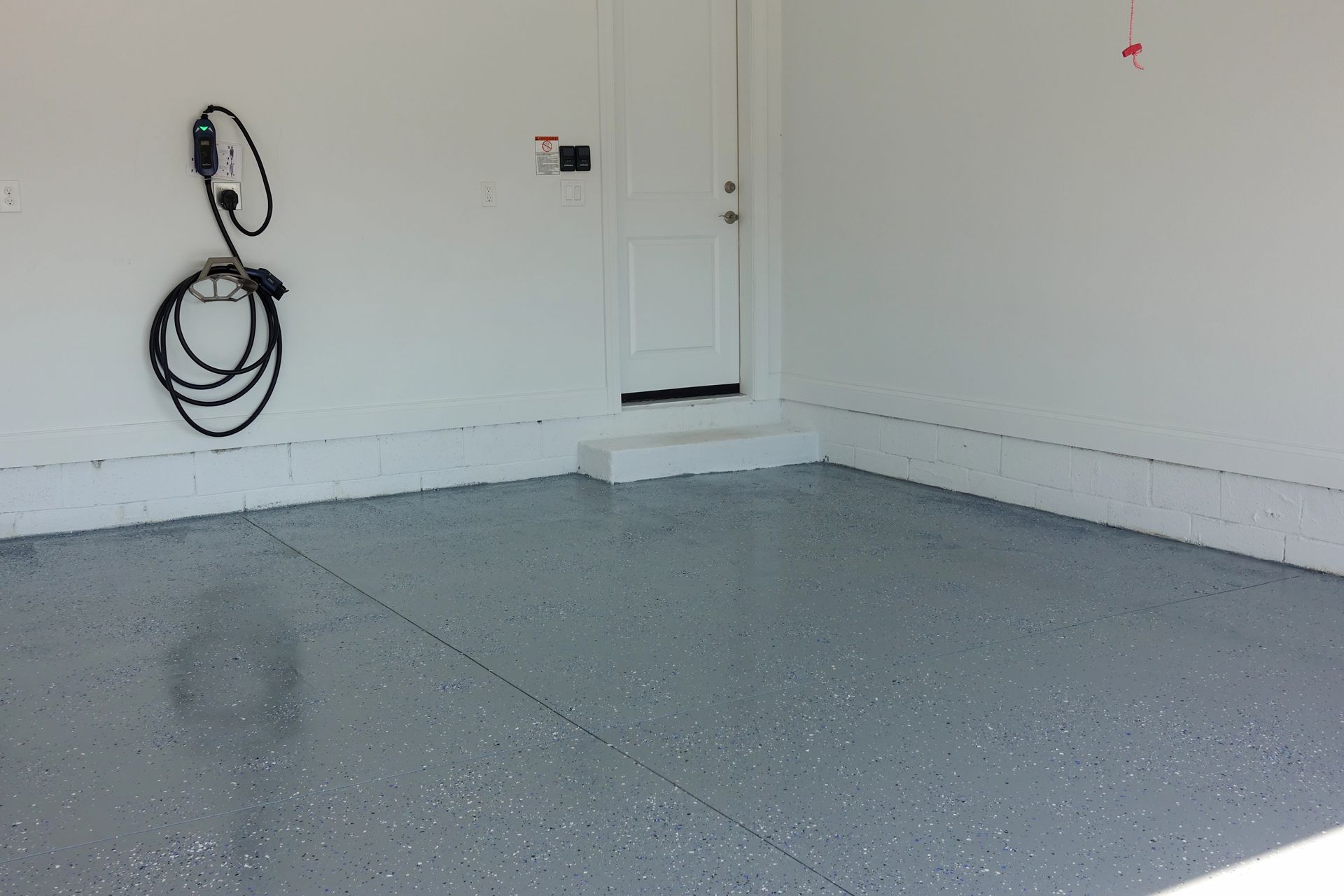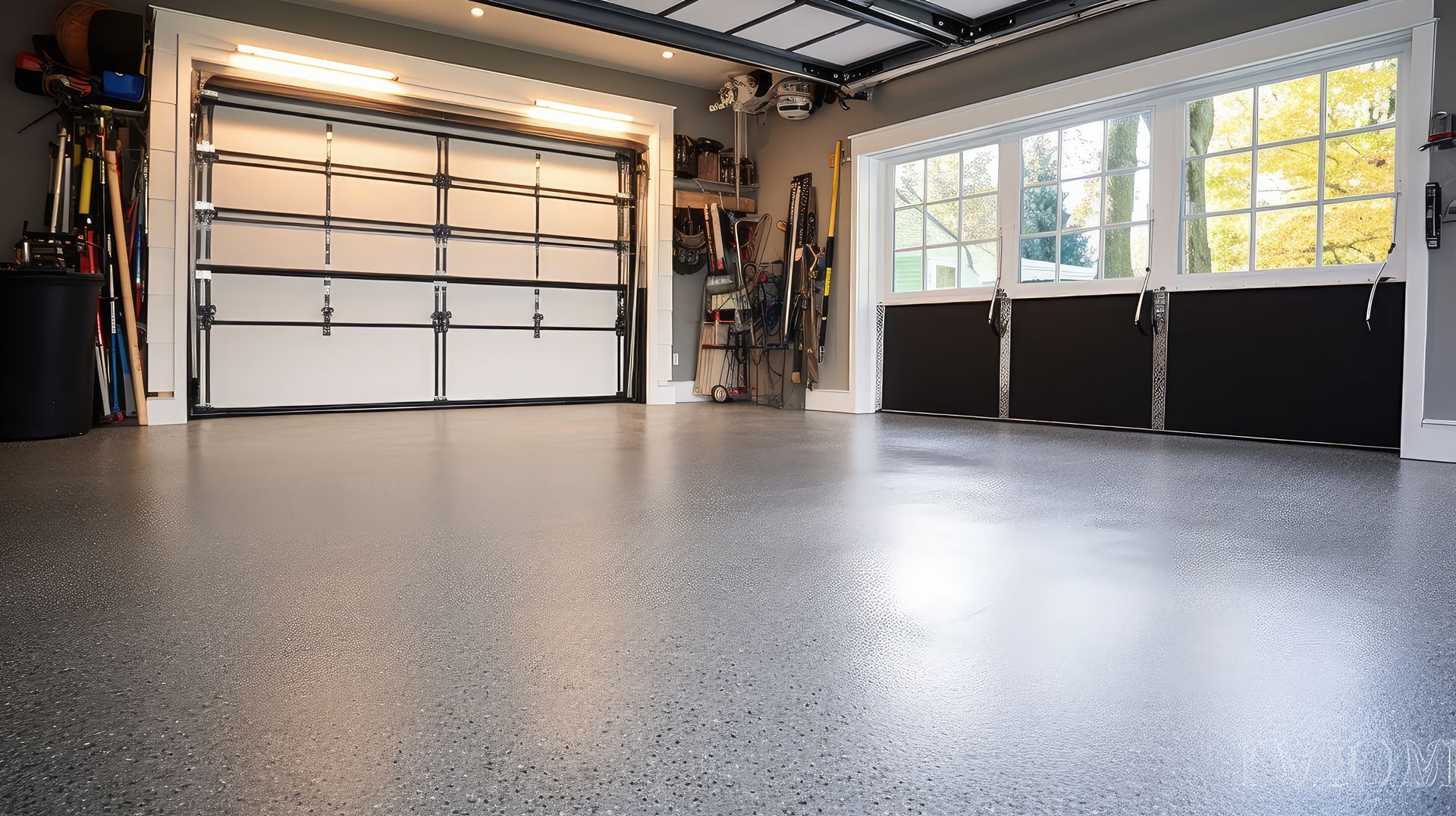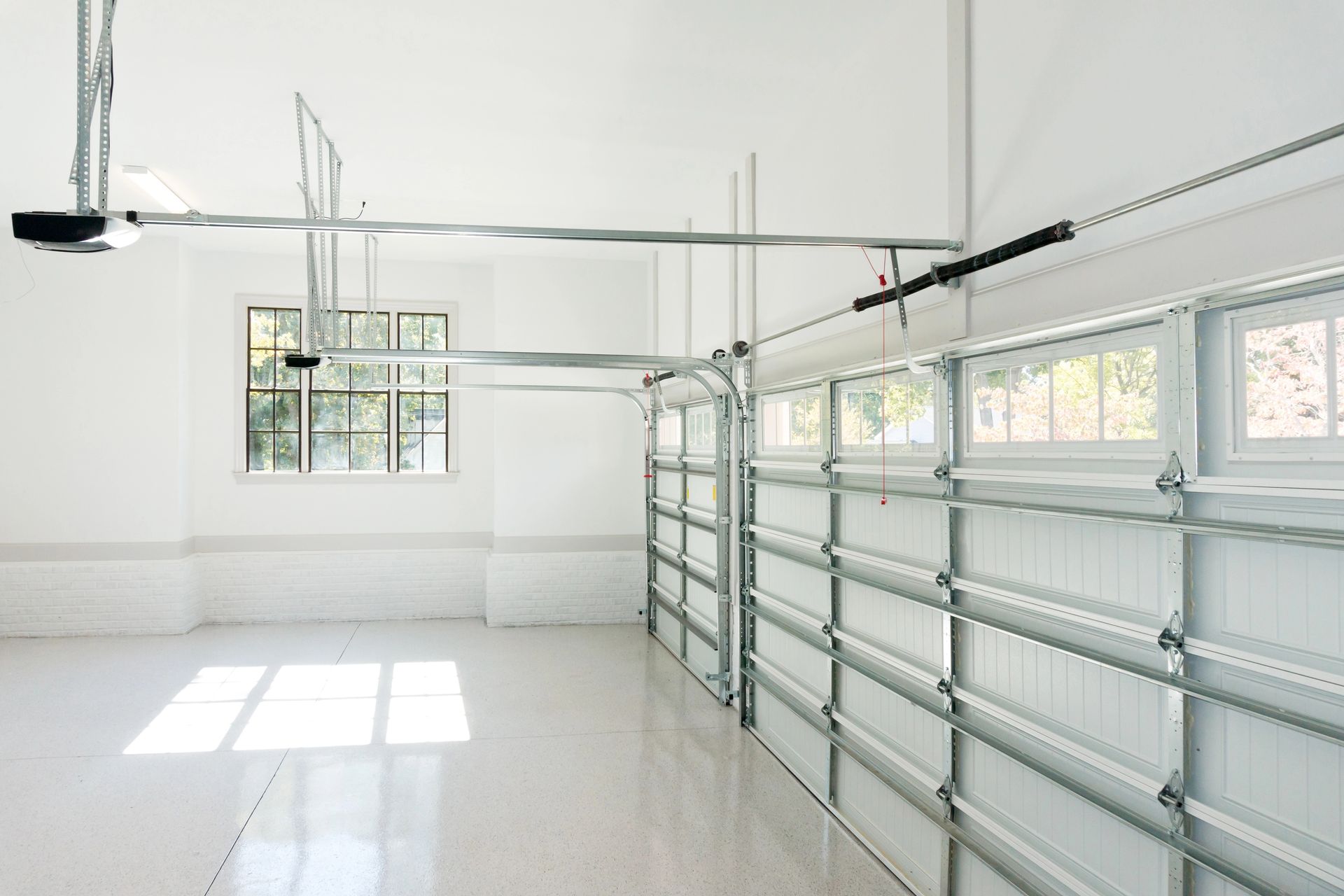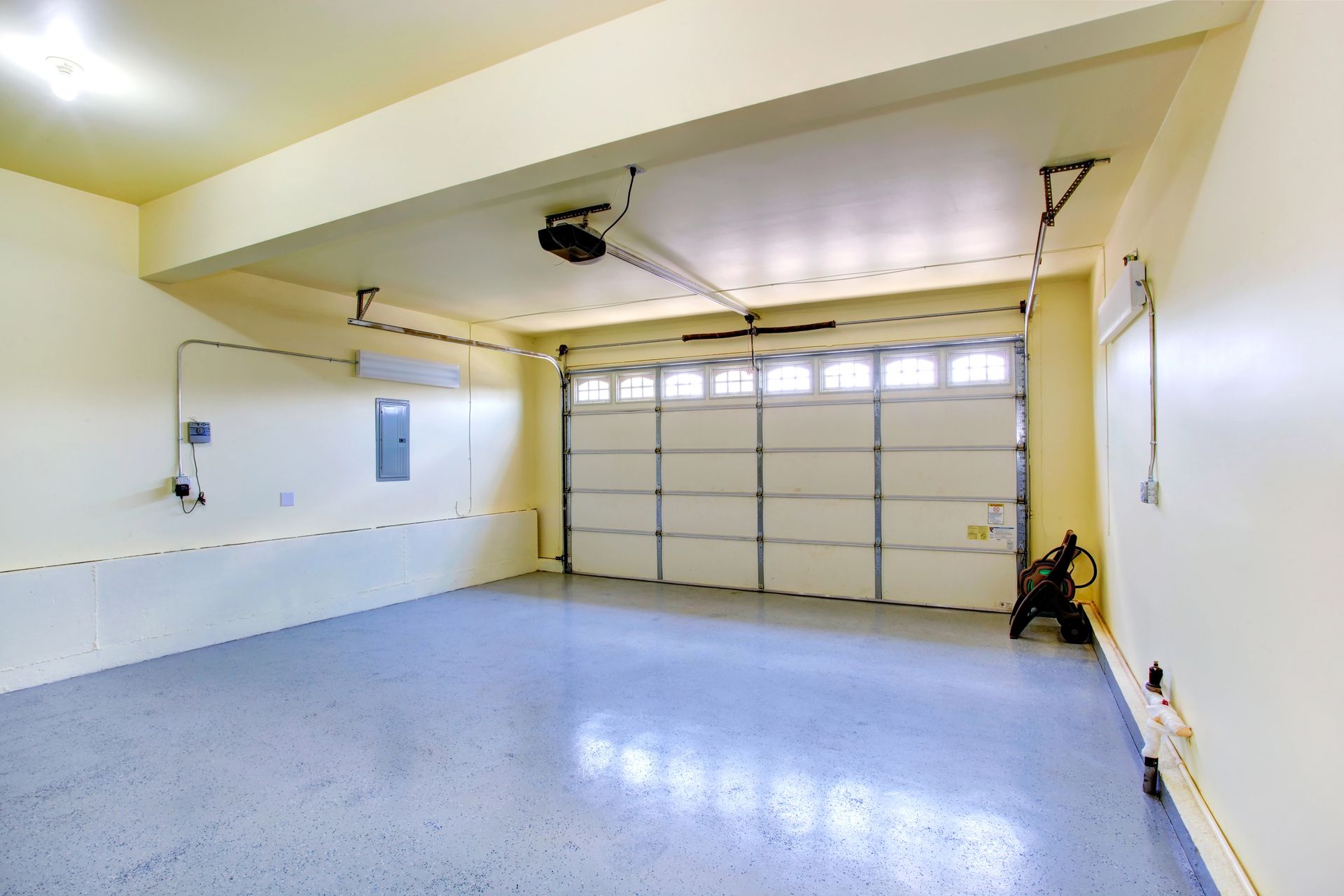Do Epoxy Floors Get Slippery When Wet?
Key Takeaways
- Slipperiness comes from residue and a glass-smooth finish, not the coating label; microtexture from flakes or additives keeps traction reliable when wet.
- In Pennsylvania’s winter conditions, quick routines—sweep, neutral-clean, and squeegee meltwater—maintain confident footing without extra maintenance.
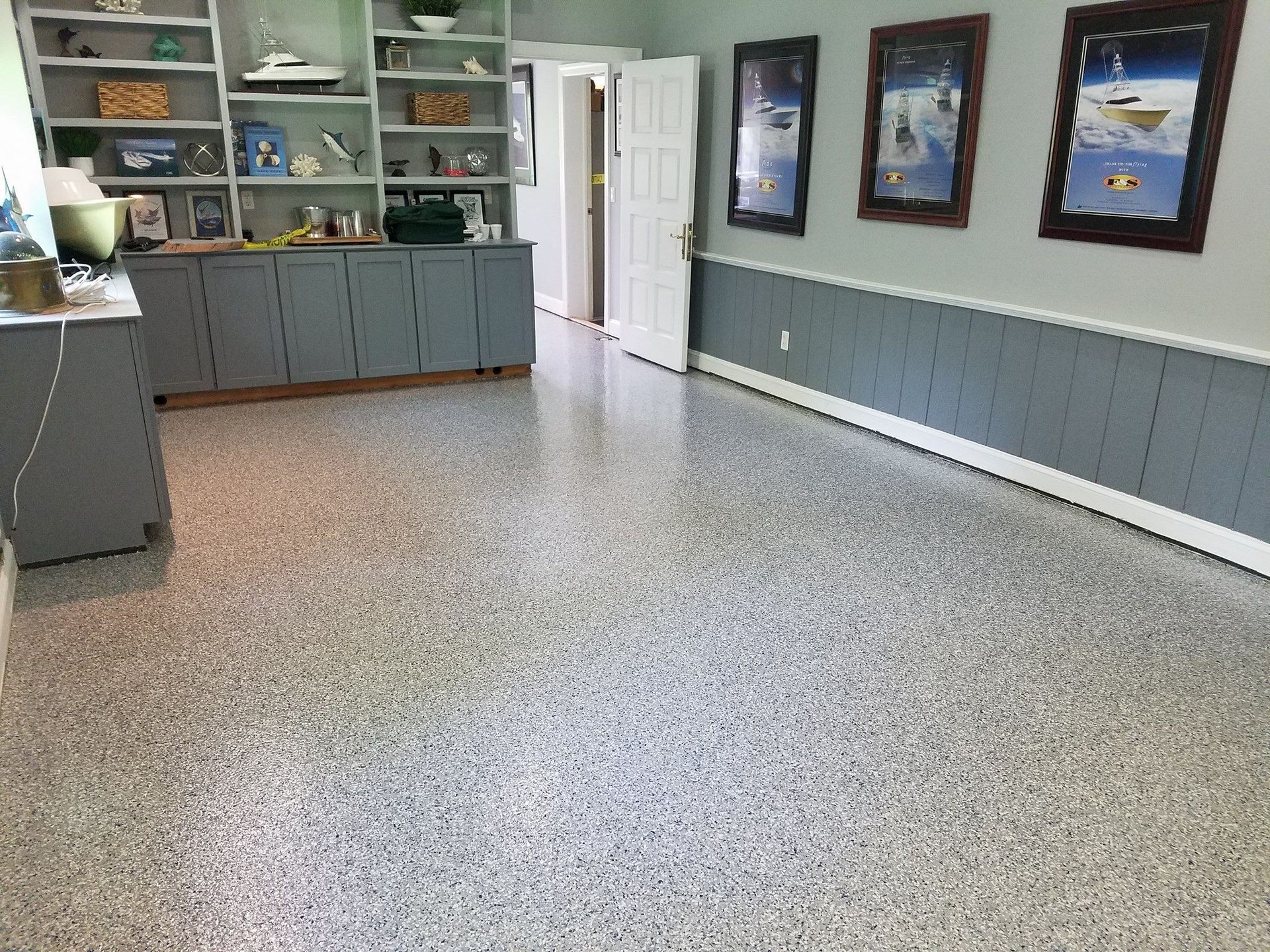
They can—just like any smooth, sealed surface—but slipperiness isn’t a given. What you feel underfoot comes down to finish texture, what’s on the surface, and the conditions in your garage. With the right topcoat and simple care, epoxy or polyurea floors stay confident underfoot year-round, even through Pennsylvania’s snow-and-salt season.
Why coated floors sometimes feel slick
Water reduces friction a little; the bigger issue is residue sitting between your shoes and the coating. Soap films from over-concentrated cleaners, silicone from tire dressings, and salt brine after winter drives can all act like a lubricant. On a perfectly smooth, high-gloss finish, that film is more noticeable. Add a bit of microtexture and the same floor feels planted—even when damp.
Pennsylvania conditions make this more obvious. Slush puddles at the threshold, road salt drying into a fine film, and spring temperature swings that leave light condensation all push a slick feel if the surface is glassy smooth or rarely cleaned.
Texture is the difference maker
Think in layers. A full vinyl-flake broadcast builds tiny peaks that the clear topcoat flows over, creating a uniform microtexture. Non-slip additives—aluminum oxide or polymer beads—in the topcoat raise traction without turning the floor gritty. Sheen matters too: satin to semi-gloss keeps the bright, clean look while taking the “ice rink” edge off high gloss.
Base chemistry helps, but finish wins. Epoxy without texture can feel slick when wet. Polyurea systems are often paired with a full flake and polyaspartic topcoat, which naturally delivers consistent microtexture. Done well, either system provides dependable footing; the finish build is what you’re judging.
Habits that keep traction high
No complicated regimen required. Focus on removing grit and films, and managing the wettest zones.
- Sweep or dust-mop as needed; fine grit is what dulls gloss and reduces grip over time.
- Mop with a pH-neutral cleaner, then rinse—leftover soap is a common cause of slick spots.
- Squeegee meltwater toward the door during winter; a small containment mat at the threshold keeps puddles corralled.
- Wipe tire-shine overspray off the floor—silicone is slippery on any coating.
These 5-minute habits matter more than specialty products.
When to add extra non-slip
Most garages are fine with a full flake and a well-dialed topcoat. Consider a traction “nudge” if you have steep approaches, a slab that holds puddles, or family members who want extra confidence near the entry step. A pro can refresh the topcoat and tune particle size so it stays mop-friendly while adding bite exactly where you need it.
Pennsylvania realities, kept subtle
Our winters introduce three predictable slip factors: snowmelt off warm tires, de-icing salts that leave a film as water evaporates, and shoulder-season condensation. Address them with quick, repeatable steps—squeegee after storms, neutral-clean mid-season to remove salt film, and keep mats rinsed. In older PA garages, where slabs see more freeze–thaw movement, many homeowners also prefer systems that pair microtexture with a flexible chemistry so footing feels consistent from January to July.
Frequently Asked Questions
Are high-gloss floors always slippery?
Not if they’re finished with microtexture. Gloss is about light reflection; traction is about surface profile.
Will non-slip additives make cleaning harder?
Not when sized correctly. Finer particles keep traction while staying easy to mop; you can also concentrate a slightly coarser mix at the threshold or on steps.
Do epoxy and polyurea feel different underfoot?
Often the difference you feel is the topcoat and flake system, not the base resin. Polyurea setups commonly use full flake and polyaspartic topcoats, which reliably build the microtexture that keeps footing steady in wet, salty months.
Closing thoughts
Any sealed floor can feel slick if water and residue sit on a dead-smooth surface. The fix is simple: build in microtexture, keep films and grit off the surface, and manage winter puddles. Do that, and an epoxy or polyurea garage floor in Pennsylvania will feel sure-footed without giving up the clean, bright finish you want.


